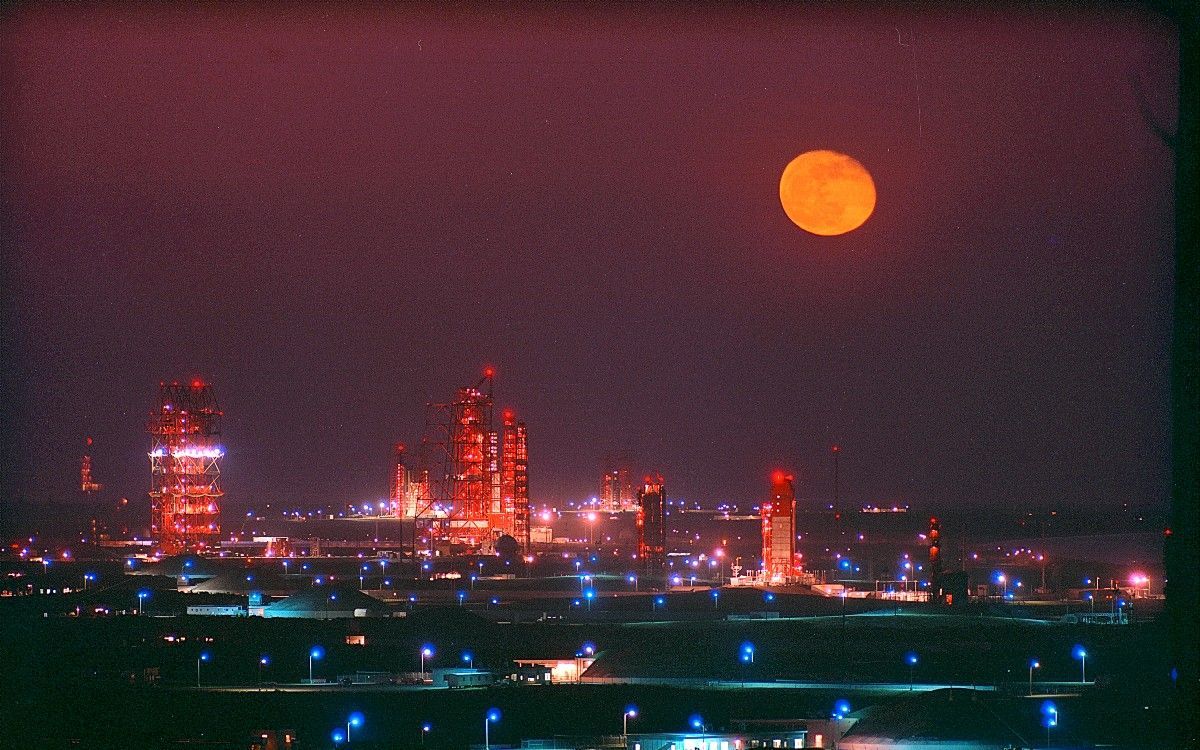Human beings landed on the Moon fifty years ago. It's a small miracle that the human species—and one nation in particular—was able to accomplish this feat with the technology available at the time.
While it's impressive that this feat still remains the high-water mark of human achievement all these decades later, the idea of putting humans back on the Moon within the next decade seems a bit underwhelming. Should we really be directing our human spaceflight efforts towards accomplishing a goal that was attained fifty years ago?
Here are five arguments as to why returning to the Moon really isn't worthwhile:
1. WE'VE BEEN THERE BEFORE
After hundreds of millions of years of evolution, from single-celled microbes to the complex technological beings we've now become, we're the first known lifeforms who are capable of leaving their home planet voluntarily (from what we know). Unfortunately, we stopped venturing out after Apollo—and maybe that's because the same old destination (the Moon) really wasn't that great the first time.
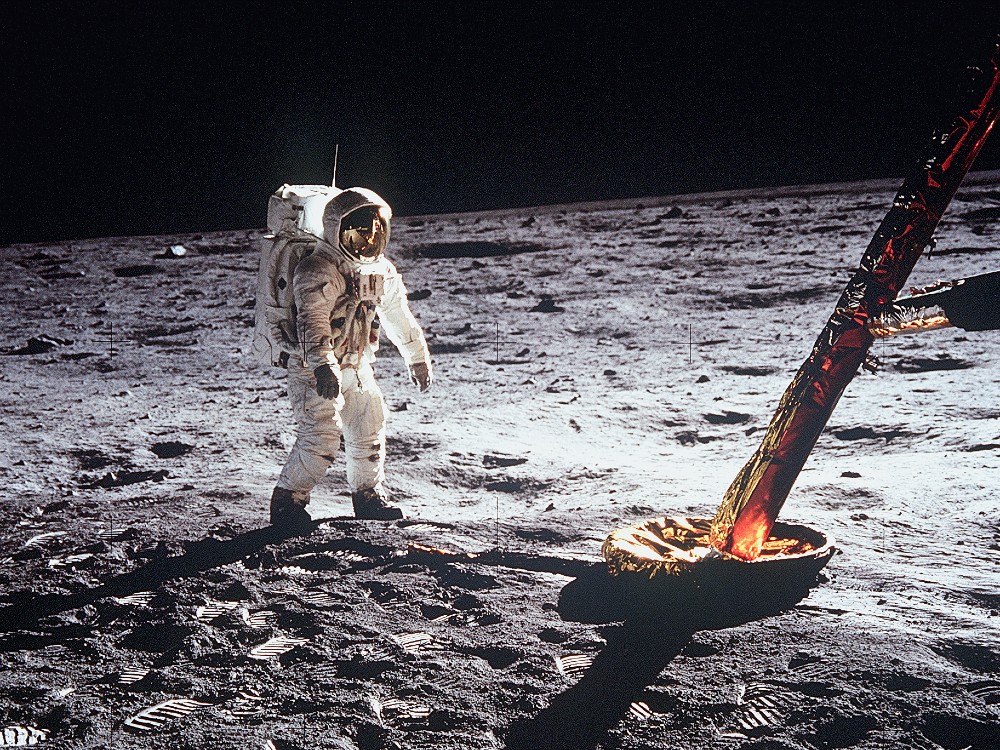 Buzz Aldrin walking out onto the Lunar surface during Apollo 11. Image: NASA / Neil Armstrong.
Buzz Aldrin walking out onto the Lunar surface during Apollo 11. Image: NASA / Neil Armstrong.
There are several reasons why humans haven't yet been back to the Moon since the Apollo program ended five decades ago, but the main drivers are the lack of funding and the lack of political decisiveness around setting a long-term goal for human space exploration.
A goal has now been put forward: NASA will return to the Moon, construct a lunar "gateway" in orbit around the Moon, and follow that up by establishing a lunar "outpost" (base) on the Moon. But announcing that you want to build a base on the Moon is like announcing you would like to build a base on the top of Mt. Everest. Sure, the views would be great, but what's the point?
Mission planners would tell us that we're going to use the Moon as the launchpad to send humans on to Mars. But again, that's like saying we're going to use Mt. Everest as a launchpad from which to go to the Moon. While it would be the highest launch pad in the world (by far), it wouldn't actually help us get to the Moon—it would still be easier to launch from sea level at an established launch facility.
In nearly every way, it's simply easier to go direct to Mars from Earth. Adding the stopover on the Moon only adds to the complexity of the journey, with no obvious payoff. If Mars was the true long-term goal, then we should be focused on getting there directly from Earth. Building a base on the Moon doesn't help us get to Mars, and it doesn't do much to enhance humanity's long-term future in space.
On the other hand, striving to build settlements on Mars is like announcing in 15th Century Europe that you want to establish a colony on the newly discovered American continent. Building up a presence on Mars is giving humanity a foothold on a brand new frontier that could eventually evolve into something beyond our wildest dreams.
The Moon just isn't an inherently interesting destination—most people are far more interested in Mars because of its similarity with our own world. The Moon is an easy target—we see it nearly every day in the sky, human beings landed there many years ago, and it just looks like a big grey rock. Why invest so much effort in going back when we already know what to expect?
2. THERE'S NOT MUCH LEFT TO DISCOVER
As space exploration missions become increasingly sophisticated and their scientific goals more nuanced, it quickly becomes obvious whether something is scientifically interesting or not. And the Moon just isn't that interesting—unless you're an astrogeologist or a Moon conspiracy theorist.
 Astronaut James Irwin of Apollo 15 doing a science on the Moon. Image: NASA / David Scott.
Astronaut James Irwin of Apollo 15 doing a science on the Moon. Image: NASA / David Scott.
Prior to the first Apollo missions, scientists had some questions they wanted answers to—despite the heavily nationalized space-race reasons for funding the mission to the Moon, there was also a scientific basis for going. Today, those scientific questions have been largely answered.
A lot of what we know about the Moon today came from the Apollo missions to the lunar surface. Moon rocks brought back to Earth helped us gain a better understanding about how the Moon formed—it's widely understood that the Moon formed from material ejected out into space after a massive collision between the primordial Earth and another protoplanet in our early solar system, some 4.5 billion years ago.
So, why go back now? There's a scientific argument that collecting Moon rocks from other regions of the Moon may help us gain an even better understanding about how planetary bodies form. This may help us better understand how planets form elsewhere in the universe, which may then help in our understanding of the origins of life and enable us to tease out an answer the age-old "are we alone?" question.
But is it really worth the additional $30 billion dollars in investment to maybe learn something new about the solar system?
While spending a little bit of money on initiatives that may or may not produce measurable results is perfectly fine, spending a whole wack of money on a flagship space program with no clearly defined scientific aims is a bit absurd.
3. WE SHOULD DIRECT OUR EFFORTS ELSEWHERE
Sure, putting humans back on the Moon might give us some science that's not so useful right now but may help us out in the future. That's usually how science works. But that's not a very good argument for spending the billions of dollars that it would take, especially if those billions of dollars could instead be redirected to other space exploration initiatives.
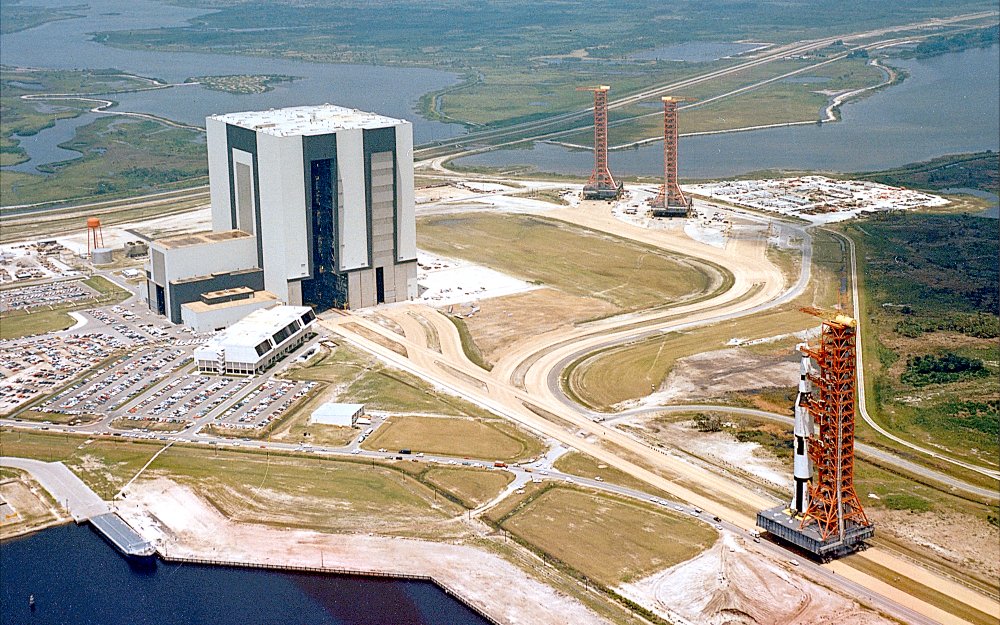 Getting the Saturn V rocket ready for launch was a huge undertaking. Image: NASA.
Getting the Saturn V rocket ready for launch was a huge undertaking. Image: NASA.
For the past decade, NASA had been actively promoting its "Journey to Mars" and pursuing the goal of putting human beings on the red planet sometime in the 2030's. The most recent administration has now changed that plan, and NASA is instead redirecting its focus towards the Moon. The current strategy involves setting up an "outpost" at the Lunar south pole, as well as a "gateway" in lunar orbit that will allow spacecraft to fuel up prior to making the journey down to the lunar surface or, in the future, all the way to Mars.
This shift in thinking from building Low-Earth Orbit infrastructure to establishing an ongoing human presence in deep space is a step in the right direction, but it's still lacking purpose. A big reason humans haven't been back to the Moon since Apollo ended is that NASA spent hundreds of billions of dollars developing the Space Shuttle and the International Space Station (ISS), and yielding little in terms of scientific value in return.
We don't want a repeat of the Space Shuttle and ISS happening on the Moon, where the cost to simply maintain the lunar base leaves no funding left to pursue putting humans on Mars.
The key element that's still missing is a sustainable, long-term vision for human exploration (and perhaps colonization) of space. As priorities shift from the Moon, then to Mars, then back to the Moon again, billions of dollars are squandered. On top of that, all of these proposed Moon and Mars missions are still solo endeavors by the United States.
It's likely that any serious attempt at establishing a human presence on Mars or on the Moon will require international partnerships with other organizations—to do otherwise would be foolish. Until we're able to sit down and set out a clear and compelling long-term plan, it's probably in our best interest that we stop sending humans to outer space altogether.
4. WE COULD JUST SEND ROBOTS INSTEAD
Computing and robotics technology has improved exponentially in the last fifty years. As early as the 1970's, NASA was putting robotic laboratories on the surface of Mars with the capability to maybe discover life there (the Viking landers may have done just that, although the results are controversial). Even if there were a worthwhile scientific basis for putting humans on the Moon at this point, any conceivable scientific question could just as easily be answered by a purpose-built robot at a fraction of the cost.
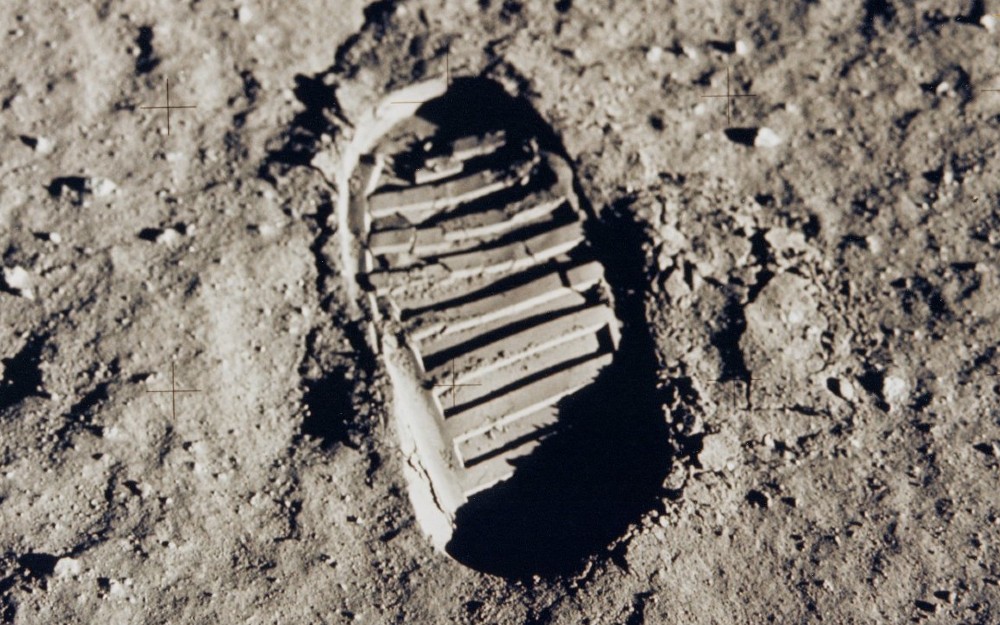 The footprint of a human boot on the Moon, taken during Apollo 11. Image: NASA.
The footprint of a human boot on the Moon, taken during Apollo 11. Image: NASA.
 In the five decades since the Apollo program ended, we've traded bootprints for rover tracks. Image: NASA/JPL-Caltech.
In the five decades since the Apollo program ended, we've traded bootprints for rover tracks. Image: NASA/JPL-Caltech.
For example, the Mars Curiosity rover launched in 2011 and cost $2.5 billion USD. It's now been exploring the surface of Mars for 7 years, radically enhancing our scientific knowledge about the red planet and answering a lot of important question about Mars: its geological history, evidence of water in the past, and the detection of methane spikes in the atmosphere.
NASA's follow up mission, Mars 2020, is launching next year at a projected cost of $2.1 billion USD. While based on a similar design concept, this updated robot is more sophisticated than Curiosity in almost every conceivable way, having the ability to collect surface samples and possibly detect signs of ancient Martian life during its time on the red planet.
Comparing the achievements of these two vehicles alone to the proposed $30 billion USD budget for putting humans back on the Moon, and the argument for a Moon return seem laughable. That's enough to send a flagship robotic exploration mission out to over a dozen intriguing destinations, including the under-explored moons of the gas giants—we could even still afford to throw a Curiosity-type rover onto the far side of the Moon just to cover all of our bases. After all, Enceladus and Europa are far more interesting Moons than that dull grey rock hanging above our heads!
5. NOBODY WANTS TO LIVE ON THE MOON
Experiments on the International Space Station have shown us that humans aren't very well suited to living in space long-term. While some of these issues may be mitigated by the steady downward tug of a Moon beneath our feet, there's still the issue of extreme isolation and the fact that if you try stepping outside without a space suit, you'll die. On top of that, there's still the problem of cosmic radiation and finding a solution to the biggest challenge on the Moon when it comes to human exploration: the moon dust.
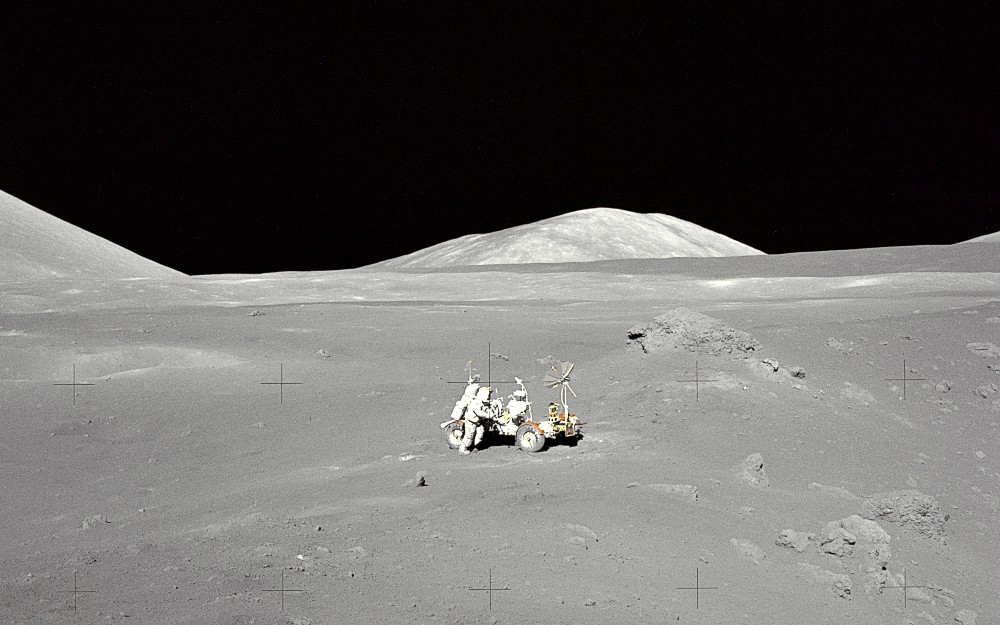 The surface of the Moon can get a little bit... lonely. Image: NASA.
The surface of the Moon can get a little bit... lonely. Image: NASA.
With NASA's current plan of establishing a Moon base that enables a "gateway" to Mars, there's plenty that could go wrong.
The biggest risk is that once we're there, maintaining a functional "outpost" might end up being so prohibitively costly that we can't afford to then fund a mission to Mars. In this scenario, NASA would toil away for years (or perhaps decades) trying to solve the various problems faced by its flagship lunar outpost, and the timeline for going to Mars would continuously slip off into the distant future.
The next biggest risk is a change in administration. Once a Moon base is established, a lack of political will could see a scaling back at NASA's human spaceflight ambitions, and the long-term goal of landing humans on Mars could be scrapped altogether.
In either scenario, we end up with a horrifying Dystopia where, instead of humanity colonizing Mars in a self-sustaining way and becoming a multi-planetary species, we instead construct a village of Earth-reliant lunar outposts and never make it to Mars at all. This is the type of scenario that Elon Musk and SpaceX are trying to avoid by moving ahead with their Mars ambitions while NASA looks to flail around in cis-Lunar space. This could even result in SpaceX losing out on future contracts in favor of more lunar-focused rocket companies, like Jeff Bezos' Blue Origin.
Human civilization doesn't need another return to the Moon. What's more anticlimactic than achieving the same goal fifty years later with better technology?
To put that in perspective, the first confirmed ascent of Mt. Everest took place 66 years ago. Today, almost anyone with a few tens of thousands of dollars to spend can be guided up the mountain and back down again semi-safely (assuming they don't mind waiting in a queue for their chance to stand on top of the world).
But we don't celebrate the achievement of climbing Everest anymore—the first confirmed summit was achieved in 1953. Every summiting of Everest since then has built on the achievements of the past: what was once difficult has become easier and commonplace.
We now have new frontiers ahead of us. We set the bar quite high in the summer of 1969 when that older generation of human beings first stepped foot on the lunar surface. In the 21st century, returning to a place we've already been doesn't help us move forward.
If we're going to subject a group of space pioneers to colonizing a new world and scraping out some sort of life away from their home planet, we should at least be giving them the opportunity to build the future on the planet that's the next most likely location for the future flourishing of humanity in the cosmos: Mars.

